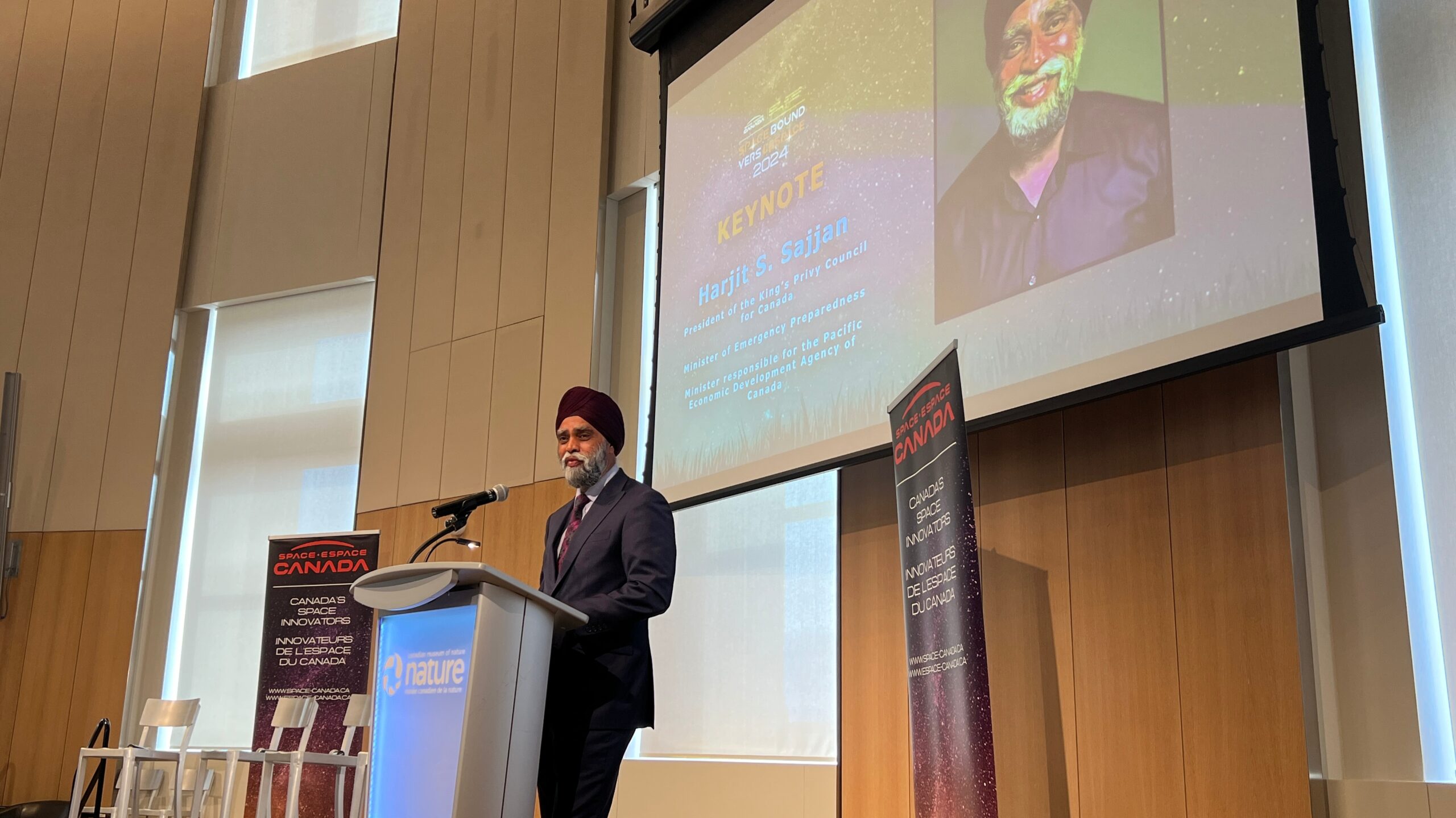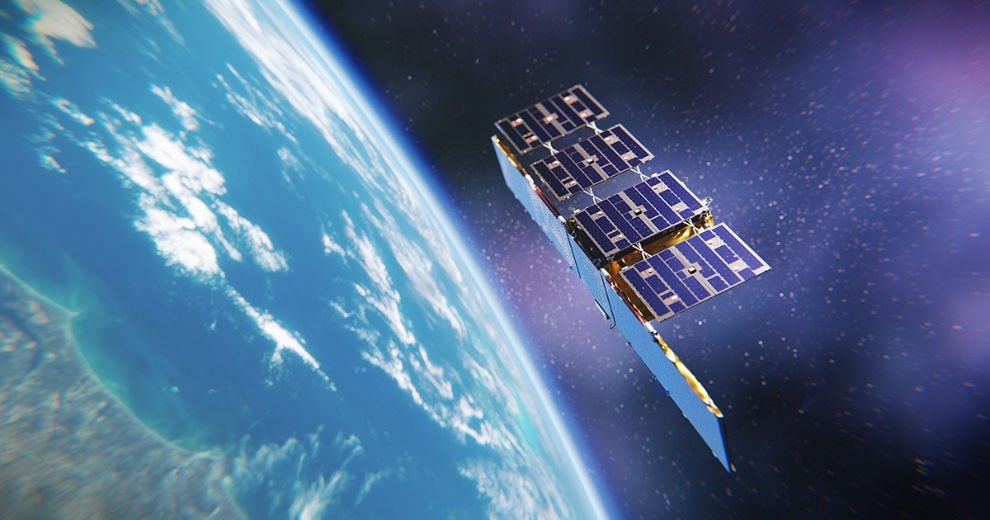Ottawa, ON – Today at the 2024 Space Bound conference, the Honourable Harjit S. Sajjan announced on behalf of the Honourable François-Philippe Champagne, Minister of Innovation, Science and Industry, that Canada, through the Canadian Space Agency, would be investing $15 million for 22 projects from 16 organizations.
The funding is a result of the Space Space Technology Development Program announcement of opportunity 8 (AO8) that was issued in January of this year.
According to the CSA the 22 projects selected will innovative projects “across various fields including imaging and quantum technologies, satellite navigation, Earth observation, and lunar exploration. Among them are groundbreaking innovations that could inform the design of future rover missions”
The funding was split into three subscategories; 8.1 Space R&D – Advanced technologies; 8.2 Space R&D – Small businesses; and 8.3 Space R&D – Next wave of technologies.
Those receiving funding include:
Space Research and Development: Advanced Technologies (AO8.1)
| Company | Contribution value | Project and objective |
|---|---|---|
| Canadensys Aerospace Corporation Bolton, Ontario |
$1,000,000 | Lunar Surface Night-Survivable Mechanical Gimbal Technology Development – Develop the technology to enable a small gimbal mechanism to survive the harsh thermal and radiation environment on the Moon. This gimbal mechanism could be used to mount cameras, sensors, antennas and other small instruments. |
| Centre de Technologies Avancées BRP-Université de Sherbrooke Inc. Sherbrooke, Quebec |
$990,000 | Lunar Battery System – Acquire the expertise needed to define requirements, design, build, test, and demonstrate the suitability of battery elements tailored for lunar applications. This expertise could greatly enhance thermal management, prevent thermal events, and improve redundant system design. |
| Honeywell Limited Ottawa, Ontario |
$1,000,000 | Lightweight Self-Calibrating Optical Inter-Satellite Link – Refine pointing technology needed in space telescopes; create a better performing and lighter space telescope mirror technology; and investigate new optical design layouts. |
| MDA Space Sainte-Anne-de-Bellevue, Quebec |
$1,000,000 | High-Performance Processor Platform – Perform a proof-of-concept and advance the development of a new high-performance single-board processor for satellites that enhances artificial intelligence / machine learning capabilities, improves speed, and increases fault tolerance while using less power. |
| MDA Space Brampton, Ontario |
$1,000,000 | LERA Rotary Actuator for Extreme Environments – Develop the Lunar Exploration Robotic Arm actuator, a small but robust and precise motor used to build robotic arms and grippers, to withstand harsh lunar conditions and demonstrate its effectiveness through environmental testing. |
| Mission Control Ottawa, Ontario |
$999,988 | AutoNav: Enabling Safe High-Speed Autonomous Mobility on the Lunar Surface – Develop an auto-navigation system that allows a rover to drive autonomously at 1 km/h. The system includes a rover sensor and computing module with navigation algorithms, and mission operations software. |
| Orbital Research Ltd. Burnaby, British Columbia |
$752,823 | K-Band Up/Down Converter – Support the development of K-Band up/down converters (UDCs) in two phases: creating the converters, and then integrating them into a single package with additional features. The result will be flexible UDCs for software-defined satellite applications. |
| Reaction Dynamics Lab Inc. (RDX) Saint-Jean-sur-Richelieu, Quebec |
$1,000,000 | Development of a lightweight propellant tank for an orbital launch vehicle – Find space mobility solutions based on a novel hybrid rocket engine technology, by developing and demonstrating a lightweight, large composite propellant tank. This builds on previous work with composite pressure vessels. |
| Rocket Lab Space Systems Inc. Toronto, Ontario |
$999,279 | Next-Generation Star Tracker Development – Research, select and test commercial components to qualify them for extreme environments. These components would then be used to develop a new star tracker that would work in a broader range of environments. |
| Xiphos Systems Inc. Montreal, Quebec |
$998,587 | Development and qualification of an enhanced COTS-based space processing system with integrated AI acceleration capabilities – Develop and qualify the flagship model of Xiphos’s high-performance, low size, weight, and power commercial-off-the-shelf-based processors. |
| Xona Space Systems Canada, Inc. Vancouver, British Columbia |
$958,582 | Development of a low Earth orbit Satellite Navigation Receiver and demonstration of PNT enhancements – Develop a receiver technology for use in heavy industry applications such as precision agriculture and mining. This will involve field-testing signals and hardware, testing live satellite transmissions, and creating an in-house PULSAR receiver. |
Space Research and Development: Small Businesses (AO8.2)
| Company | Contribution value | Project and objective |
|---|---|---|
| Blue Sky Spectroscopy Inc. Lethbridge, Alberta |
$350,000 | Intrinsically Calibrated Multi-Axis Laser-Based Position Metrology System Suitable for Cryogenic and Space Applications – Develop and test a new calibration method for a novel frequency-modulated laser interferometer that can measure up to eight axes with one laser/detector, which means less mass and complexity to build the system that controls precise positioning of optical components. |
| Nüvü Caméras Inc. Montreal, Quebec |
$350,000 | Photon-counting CMOS camera for nanosatellites – Develop a space camera solution integrating Nüvü Caméras’ new Complementary Metal-Oxide-Semiconductor (CMOS) controller for photon counting. This technology could be used in the medical field and in astronomy, among other areas. |
| Obruta Space Solutions Corp. Ottawa, Ontario |
$350,000 | POLAR: A Tool for Training and Evaluating Spacecraft Rendezvous, Proximity Operations, and Docking Computer Vision Algorithms – Develop a highly realistic simulator to generate accurate imagery for improving, training, and testing advanced computer vision algorithms and AI models. This technology could help make spaceflight safer and more sustainable by enabling space debris removal, satellite refuelling, recycling old satellites, and enhancing space domain awareness. |
| Orbital Research Ltd. Burnaby, British Columbia |
$261,944 | X-Band Up/Down Converter – Advance the product designs to a higher technology readiness level with prototype modules designed and assembled for benchtop testing. The up and down converters, used in most radio frequency applications to allow frequency shifting, will be integrated into a single module and a space-rated microcontroller will be added. |
| QEYnet Inc. Maple, Ontario |
$349,968 | Scaling Performance of a Low-Cost, Space-Based Quantum Key Distribution (QKD) System – Redesign optical and mechanical front-end of the QKD system; develop engineering model to be used for functional and performance testing; complete test campaign and list necessary design enhancements. |
| SBQuantum Sherbrooke, Quebec |
$349,744 | HEQASPAN: High-Efficiency Quantum Accurate Space Platform for Navigation – Develop and implement new quantum control techniques to improve sensor efficiency and accuracy, enabling the use of small CubeSat constellations. These constellations would help create precise, frequently updated magnetic navigation charts for the Northern Territories and provide drone-compatible technology for mineral exploration in remote areas. |
| Wyvern Incorporated Edmonton, Alberta |
$350,000 | Lightweight Composite Mechanisms Enabling Deployable Optical Earth Observation Payloads – Advance deployable optics technology allowing Earth observation payloads to be compact during launch and expand in orbit. This smaller, lighter design would reduce launch costs and enable affordable collection of high-quality hyperspectral imagery. This project will improve the space-readiness of these components for use in next-generation satellites. |
Space Research and Development: Next-Wave Technologies (AO8.3)
| Company | Contribution value | Project and objective |
|---|---|---|
| Honeywell Limited Ottawa, Ontario |
$500,000 | Volume Bragg Grating (VBG) Directional Filter – Design and build a VBG-based device for intersatellite links; characterize and verify the device in a lab; demonstrate reliability through environmental tests like TVAC, shock, and vibration; and design a system architecture to integrate the VBG into existing Optical Inter-Satellite Link terminal. Optical communication between satellites is a fast-growing field, as it allows for much more data transmission when compared to radio frequency. |
| Mission Control Ottawa, Ontario |
$499,799 | Spacefarer 360: 3D Imaging Processing Pipeline and AI for Autonomous Space Robotics – Propose a new AI-integrated image processing system that will help spacecraft perform tasks autonomously and safely in complex environments. |
| QEYnet Inc. Maple, Ontario |
$439,284 | Adaptation of a Quantum Transmitter to Space-Based QKD Applications – Adapt QEYnet’s existing terrestrial Quantum Transmitter (QTx) design for use in space. QEYnet will modify the design of the QTx, manufacture an engineering model system, verify its performance, and subject it to a series of tests. |
| Reaction Dynamics Lab Inc. (RDX) Saint-Jean-sur-Richelieu, Quebec |
$500,000 | Development of Carbon-Neutral Fuel for Hybrid Rocket Engine – Develop a carbon-neutral fuel for a hybrid rocket engine that will power a low-cost, eco-friendly, orbital launch vehicle. Working with a bioderived polymer supplier, RDX will manufacture a fuel with net-zero emissions and test it in a demonstrator rocket engine. |



